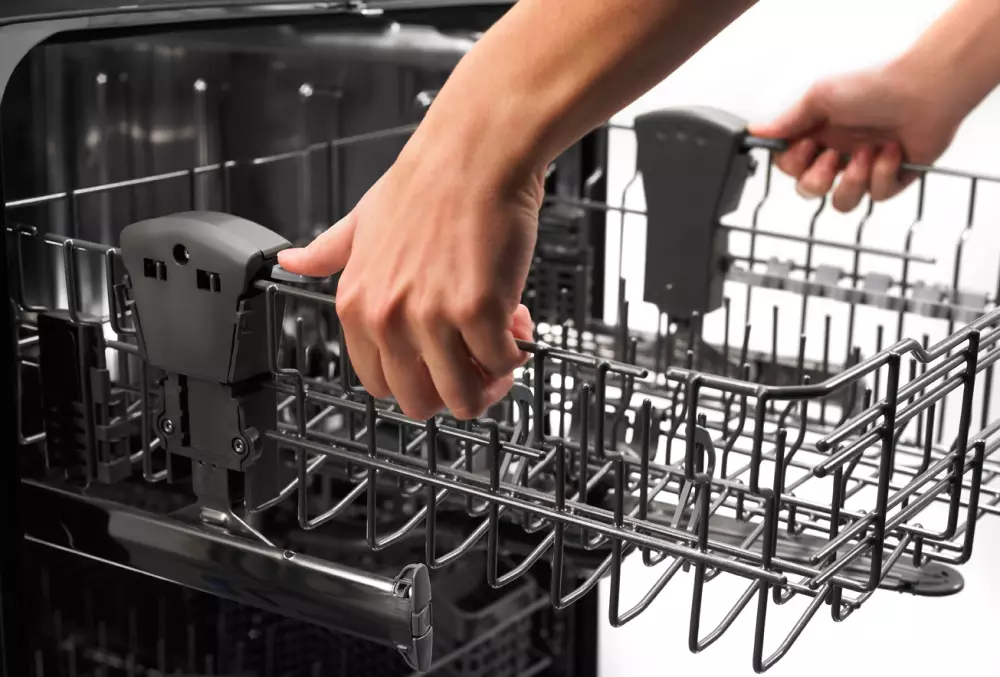How To Clean a Splashback: Your Complete Guide To Get Your Splashbacks Looking Shiny Again
This comprehensive guide will cover all the steps you need to take to clean your splashbacks. We'll also give you tips on what tools and products you should use and how long it will take to complete the job.
Many different kitchen splashbacks can be used in the home, including glass, stainless steel, ceramic tiles, and even stone. But no matter what kind of splashback you have in your kitchen, they all tend to get dirty over time. Whether it's grease from cooking or dirt from food splatters, a few simple steps can help keep your splashback looking clean and sparkly again.
If you've seen a kitchen with a splashback, you know how easy it is to get them to look shiny again. But what if you need to know what a splashback is? Or what would that even look like?
Well, let me tell you. A kitchen splashback is a screen installed on your wall to catch grease, water, and other kitchen messes. It shields against heat and condensation but can also quickly become dirty.
That's where we come in. We'll show you how to clean your kitchen splashbacks so you can get it looking shiny again!
What You'll Need
How to clean glass splashbacks?
Cleaning glass splashbacks with abrasive cleaners and abrasive cloths have the potential to damage your glass splashback. Always clear up spills as soon as they happen so there will be less chance of glass surface stains.
Use a high-quality glass cleaner when you clean a glass splashback to maintain the cleanliness and lustre of your glass splashback. On glass splashbacks, microfiber towels perform better than other types of cloths.
An effective treatment for cleaning glass splashbacks is white vinegar. Four parts of water and one part of white vinegar should be used. Pour the solution into a spray bottle and use it to apply it to the glass splashback. Clean the glass with a soft, lint-free cloth. If you have access to a newspaper, try wiping the surface with it. It aids in giving the glass a streak-free finish.
Avoid cleaning the glass splashback while direct sunlight is shining on it. The heat from the sun can dry up your cleaning solution and heat the glass, making it more challenging to achieve a streak-free surface.
Consider using distilled water instead of vinegar when cleaning glass splashbacks if streaks still appear. The minerals that tap water contains are absent from distilled water. Minerals are to blame for streaking.
Let the vinegar solution or glass cleaner sit on the glass splashback for one to two minutes if the discolouration is extremely difficult to remove. There is no way to buff scratches out of glass, so never use an abrasive cloth to attempt to remove stains. If you do, you risk damaging a glass splashback.
How To clean acrylic splashbacks?
Splashbacks made of acrylic require special care because the material is delicate. To avoid the risk of damaging the surface of your splashback, use a non-abrasive cleaning product.
Start by wiping away any grease or markings with a gentle, damp cloth. Use an ordinary household cleaner instead of an abrasive one. After using the wet cloth, use a dry, soft cloth to dry the splashback. Doing so will stop streaking.
Try to remove any stains from acrylic splashbacks as quickly as possible. They might be challenging to remove later if you leave them.
Regularly inspect the acrylic splashbacks' edges. A silicone sealer ought to be used to seal them. If the sealer develops cracks or splits, fix the problem as quickly as possible.
It could be feasible to polish off scratches or stains on an acrylic splashback if they do occur. When you bought the acrylic splashback, instructions might have been included. If not, speak with your supplier, who can guide how to polish out blemishes and damaged surfaces.
The surface of acrylic splashbacks is sealed, and the splashback may require a new sealer, but it is most likely only necessary once it has been used for more than five years. Keep your acrylic splashbacks looking good for years by asking your provider for assistance.
How to clean stainless steel splashbacks?
A typical DIY natural cleaning product can easily clean a stainless steel splashback. Only three things are required: white vinegar, an empty, clean spray bottle, and olive oil.
Pour the vinegar into the spray bottle, then evenly spray the white vinegar solution unto the stainless steel splashback. To get rid of the greasy remnants, wipe against the grain.
Apply a little olive oil with paper towels or a microfiber cloth once you clean. This tactic will increase the polished and shining surface, giving it a flawless appearance.
Use a paste of water and baking soda if the stubborn stains are dried. Apply the paste to the stain, then leave it for 30 minutes. Remove event watermarks by rinsing and cleaning them with a dry cloth.
Use a vinegar solution to remove stubborn stains as a different choice. Directly apply it to the stain, allow it to sit for a few minutes, and then wipe it with a clean cloth.
How to clean tiled splashbacks?

For kitchen splashbacks made of tiles, grouting must also be considered. Combining one cup of baking soda, two teaspoons of dish soap, and two cups of water is the most effective way to clean the tiles and grout. Apply the mixture using a spray bottle after thoroughly mixing the ingredients.
Wipe the tiles' surface with a damp towel or lint-free cloth. To clean the grouting, use an old toothbrush. Most stains on the tiles and grout can be removed using the soapy water mixture. After you're done, use a moist cloth to wipe the tiles and grout and then a dry cloth to polish the surface for a streak-free finish.
The same outcomes can be obtained by cleaning your tiled splashbacks with a non-abrasive cleaner. Make sure to clean them frequently using any method as directed.
Any splashes should be removed immediately, and you should be careful to remove any stains from the grout as soon as possible. Grout is porous, so other cleaning techniques might not be effective.
How to clean stone splashbacks?

Stone splashbacks are incredibly elegant and versatile, giving your kitchen a high-end appearance. Kitchen splashbacks made of stone, such as granite and marble, are relatively permeable.
Use specific cleaning chemicals made for stone splashbacks for routine maintenance. Your provider will advise you on the best cleaning solution that won't harm the stone. To prevent ruining the delicate stone, remove spills as soon as possible.
Use a specific sealing agent to safeguard the delicate stone and preserve it intact for years to come. Make sure to replace the sealer layer every two to three years because it will quickly lose its effectiveness.
How to clean metallic splashbacks?
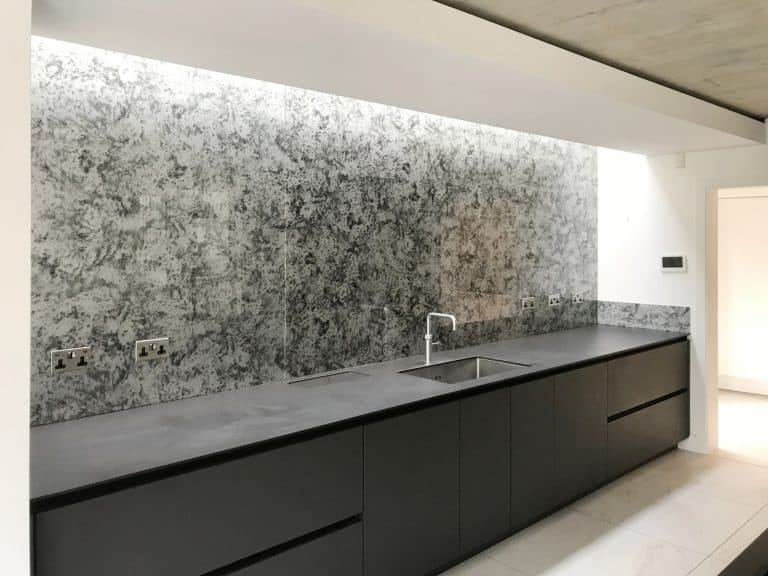
Metallic splashbacks, like those made of aluminium or another metal, typically only need soapy water or window cleaner. To try a more organic option, combine warm water and lemon juice. Make sure you always rinse the solution you use with clean water, just like you should with all the other materials.
You can use a clean microfiber cloth to apply a solution made from small ammonia and water to the surface to give it a shiny surface. When working with ammonia, always wear gloves because it is a corrosive substance on your skin.
Get Your Splashbacks Sparkling Now!
So, what are you waiting for? If you want your glass splashback or other types of splashback to look like they did when they were new, get them cleaned.
You can do it yourself or call a professional house cleaning service, but whatever you do, don't let your splashbacks get any dirtier before you have them professionally cleaned.
And if you need a nudge to get started, we've got one. Think about all the money you'll save by keeping your splashbacks clean. You can also use our ultimate kitchen cleaning guide if you have more time and energy to keep your kitchen sparkling clean!
FAQs
How to get stains out of glass splashbacks?
The best method for removing stains from glass splashbacks is to use hot water, baking soda, or both, and lint-free cloths to gently rub the affected area.
Apply a mixture of water and white vinegar to the glass splashbacks, and then use an old toothbrush to remove any stubborn marks that are particularly difficult to remove. You can also use a mixture of cream of tartar and white vinegar to remove oil-based stains.
How to remove burn marks from glass splashbacks?
Use wet sanding to remove some of the damaged material to remove burn marks from the glass splashback. For harsher markings, use medium-grade sandpaper or steel wool bathed in water. For milder damage, use an ultra-fine pad. If you have no other options, cleaning the area with a cleanser and a damp cloth should solve the problem.
How to fix a melted tiled splashback?
If your backsplash has deformed or melted, it was probably exposed to excessive heat for an extended period. The best solution is to use a scraper to individually remove each tile, then use fresh adhesive to reattach it.
